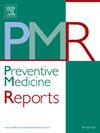社会隔离和孤独感及其与全因死亡率的关系。挪威一项基于人口的纵向研究:特罗姆瑟研究 1994-2023
IF 2.4
3区 医学
Q2 PUBLIC, ENVIRONMENTAL & OCCUPATIONAL HEALTH
引用次数: 0
摘要
研究样本包括参加挪威特罗姆瑟研究的特罗姆瑟4调查(1994-95年,基线)的9061名女性和8735名男性,他们的年龄在25至69岁之间。研究样本的一部分还参加了特罗姆瑟5(2001年)、特罗姆瑟6(2007-08年)和特罗姆瑟7(2015-16年)调查。对参与者的全因死亡率进行了跟踪调查,直至 2023 年 11 月;其中有 1630 名女性和 2099 名男性死亡。有关社会隔离(最不隔离、适度隔离和最隔离)和孤独感(是、否)的信息来自自填问卷。结果在调整协变量后,最孤立与最不孤立的男女危险比分别为 1.37(95 % 置信区间为 1.18-1.59)和 1.41(1.25-1.60)。这些危险比在较年轻的成年人中更高(基线年龄为 50 岁的女性和男性的危险比分别为 1.55 和 1.76),尽管年龄与孤独的交互作用在女性(P = 0.26)和男性(P = 0.01)中没有统计学意义。孤独感的调整危险比分别为 1.51(1.23-1.87)和 1.46(1.16-1.84)。随着时间的推移,在特罗姆瑟5和特罗姆瑟7,分别有51%和47%的参与者仍处于最孤立的状态;在特罗姆瑟5,最初孤独的人中有25%仍处于孤独状态,而在特罗姆瑟5,最初不孤独的人中只有2.6%变得孤独。本文章由计算机程序翻译,如有差异,请以英文原文为准。
Social isolation and loneliness and their association with all-cause mortality. A population-based longitudinal study in Norway: The Tromsø Study 1994–2023
Objectives
Loneliness and social isolation are associated with increased mortality, but few studies have assessed this association over long time in young adults.
Methods
The study sample comprised 9061 women and 8735 men aged 25 to 69 years who participated in the Tromsø4 survey (1994–95, baseline) of the Tromsø Study, Norway. A subset of the study sample also attended the Tromsø5 (2001), Tromsø6 (2007–08), and Tromsø7 (2015–16) surveys. Participants were followed up for all-cause mortality until November 2023; with 1630 women and 2099 men deceased. Information on social isolation (least isolated, modestly isolated, and most isolated) and loneliness (yes, no) were taken from self-administered questionnaires. Sex-specific, time-varying Cox models were employed, updating exposures and covariates from Tromsø5.
Results
Most-isolated versus least-isolated women and men had hazard ratios of 1.37 (95 % confidence interval 1.18–1.59) and 1.41 (1.25–1.60), respectively, after adjustment for covariates. These hazard ratios were higher in younger adults (HR = 1.55 in women and HR = 1.76 in men aged <50 years at baseline), though the age-isolation interaction was not statistically significant in women (P = 0.26), but in men (P = 0.01). For loneliness, the adjusted hazard ratios were 1.51 (1.23–1.87) and 1.46 (1.16–1.84). Over time, 51 % and 47 % of participants remained most isolated at Tromsø5 and Tromsø7, respectively; 25 % of those initially lonely remained so at Tromsø5, while only 2.6 % of those initially non-lonely became lonely at Tromsø5.
Conclusion
Both social isolation and loneliness are strongly associated with all-cause mortality, particularly among younger adults, underscoring their importance as public health concerns.
求助全文
通过发布文献求助,成功后即可免费获取论文全文。
去求助
来源期刊

Preventive Medicine Reports
Medicine-Public Health, Environmental and Occupational Health
CiteScore
3.90
自引率
0.00%
发文量
353
 求助内容:
求助内容: 应助结果提醒方式:
应助结果提醒方式:


